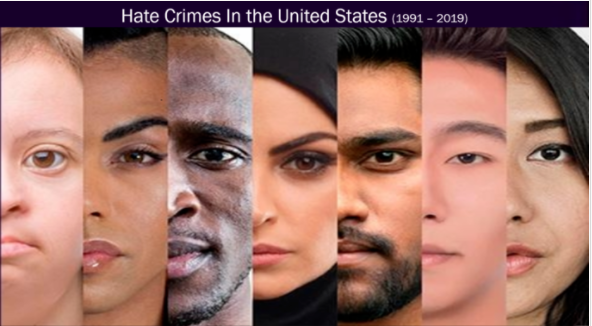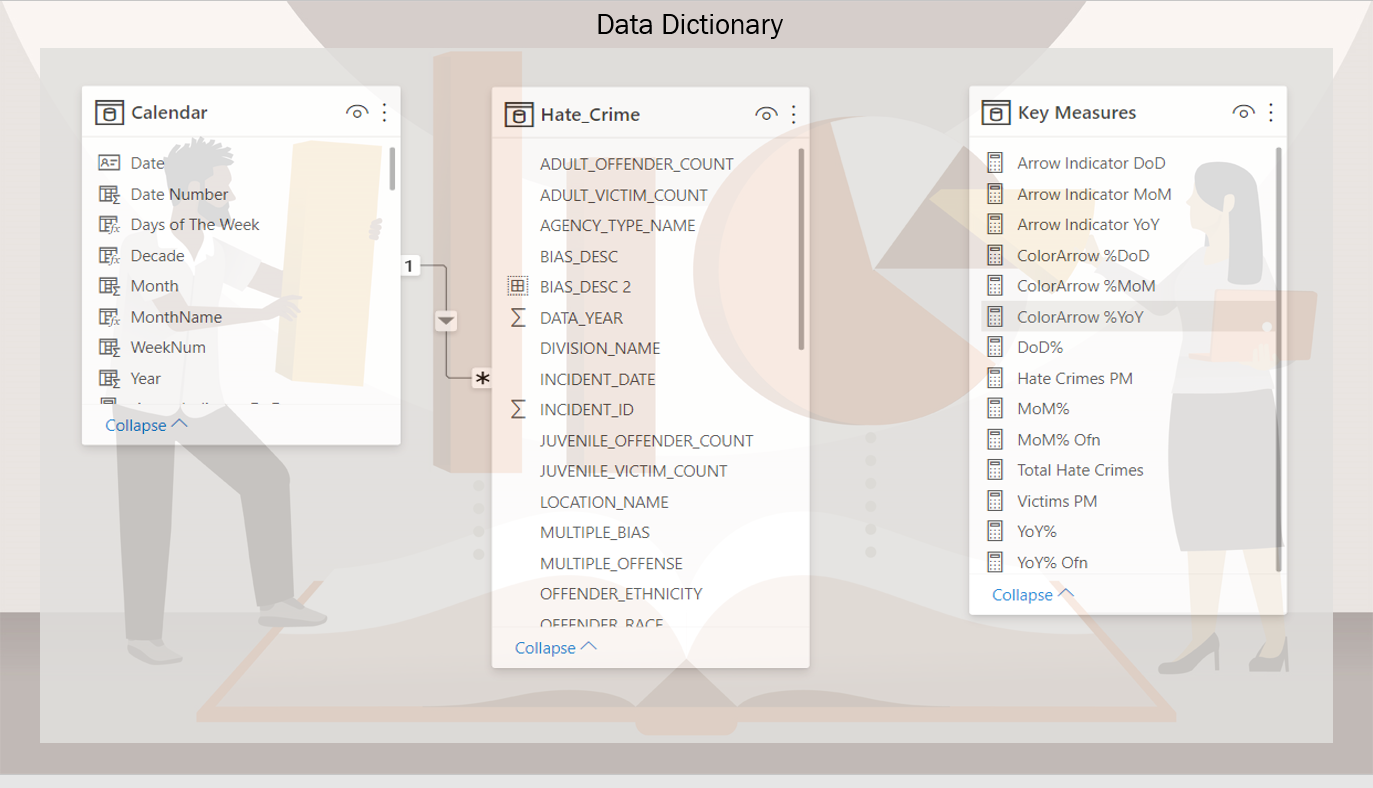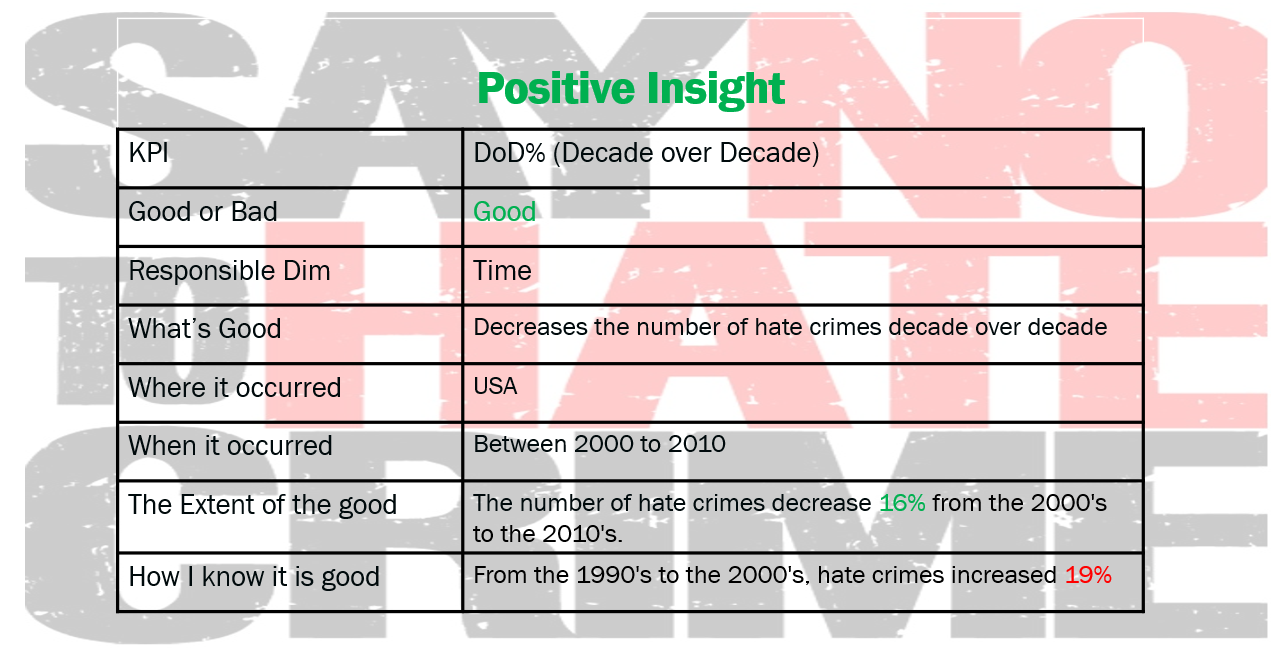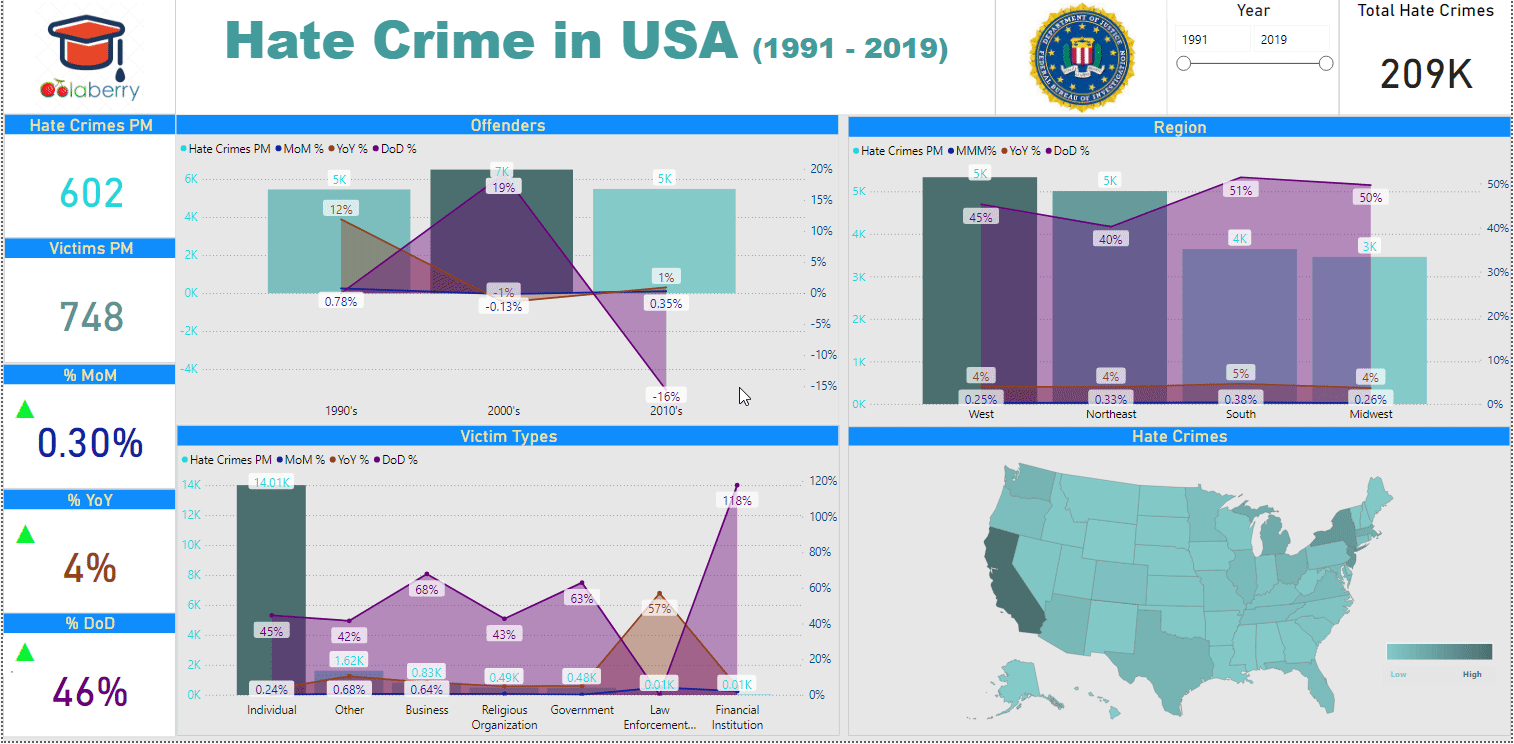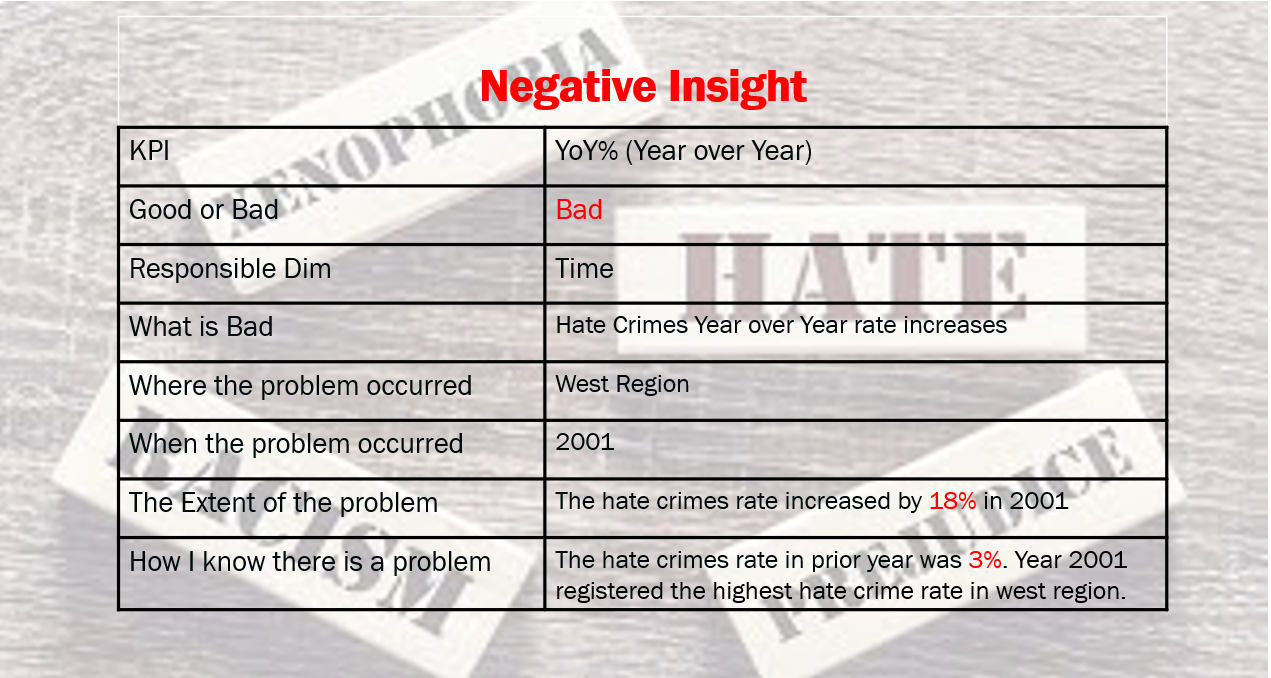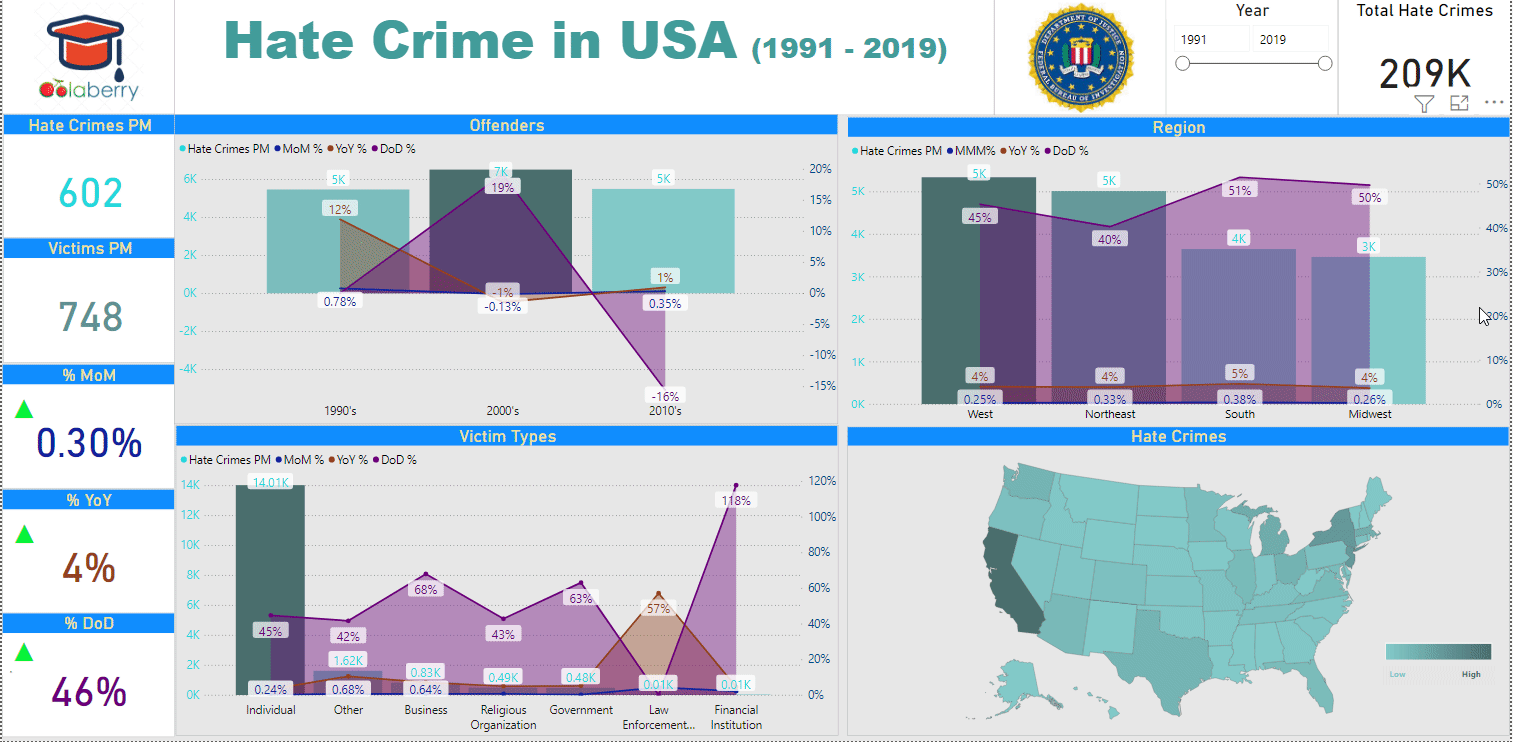Project Overview
Each year, the FBI publishes data concerning bias-motivated offenses reported by law enforcement to gauge the scope and nature of hate crime in the nation. This report chronicles crimes that were motivated by bias against a race, gender and gender identity, religion, disability, sexual orientation, or ethnicity. Tables in the report include information about the types of offenses committed, some traits of the victims and the offenders, and aggregate hate crime offense counts by State and Agency type.
The Hate Crime Statistics dataset provides annual statistics on the number of incidents, offenses, victims, and offenders in reported crimes that are motivated in whole, or in part, by an offender’s bias against the victim’s perceived race, gender, gender identity, religion, disability, sexual orientation, or ethnicity. Hate crime data is captured by indicating the element of bias present in offenses already being reported to the Uniform Crime Reporting (UCR) Program.
Role:
Problem Statement
A hate crime is a criminal offense against a person or property motivated in whole or in part by an offender\\\\\\\'s bias against a race, religion, disability, sexual orientation, ethnicity, gender, or gender identity.
People victimized by violent hate crimes are more likely to experience psychological distress than victims of other violent crimes. Specifically, victims of crimes that are bias-motivated are expected to experience post-traumatic stress, safety concerns, depression, anxiety, and anger than victims of crimes that are not motivated by bias.
Reported hate crimes in 2017 were motivated by hostility based on race/ethnicity 58% and religion 22%. Hate crimes targeted Jewish, African - American, and LGBT communities at high rates.
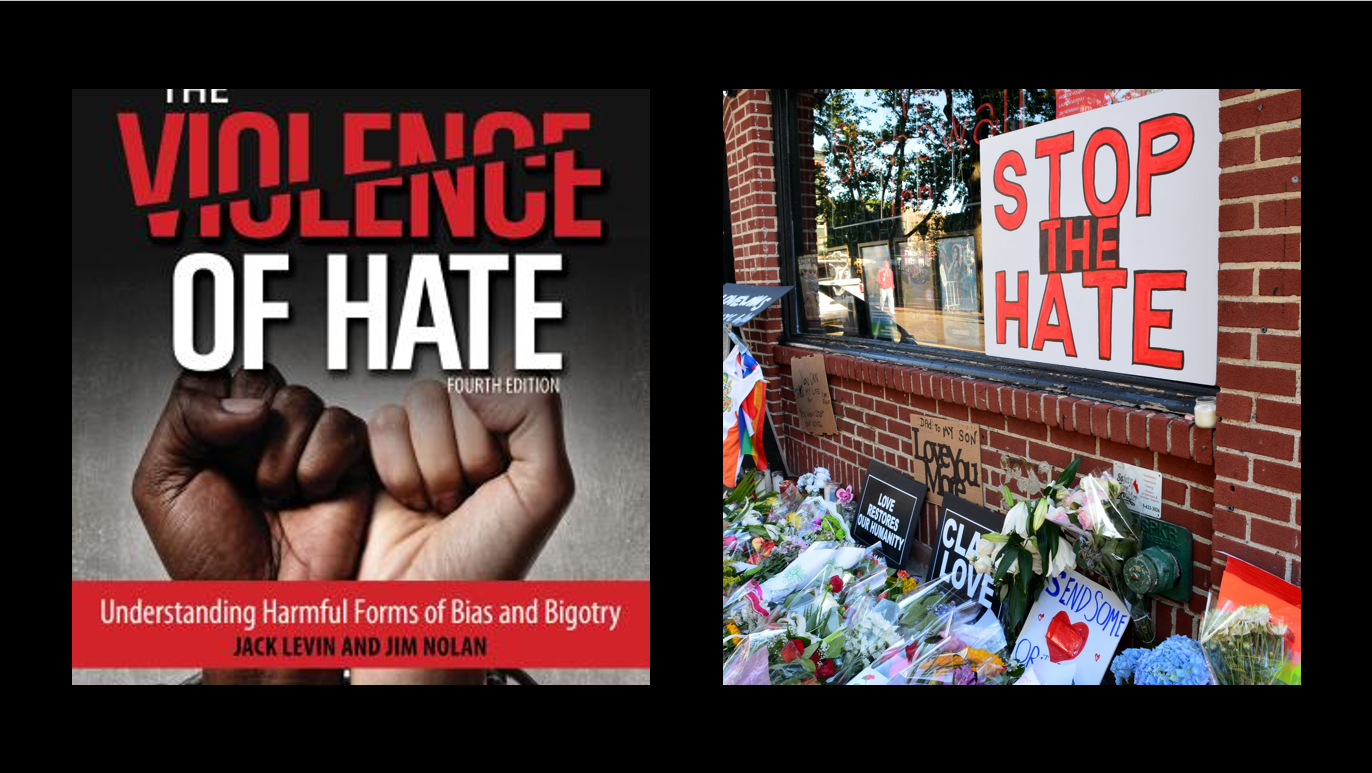
Next Steps
1. Every hate crime incident must be reported. The Hate Crimes Reporting gap is the significant disparity between hate crimes that occur and those reported to law enforcement. It is very important to report hate crimes not only to show get help for victims but also to send a clear message that the community will not tolerate these kinds of crimes. Reporting hate crimes allows communities and law enforcement to fully understand the scope of the problem in a community and put resources toward preventing and addressing attacks based on bias and hate.
2. Pass hate crime laws in the states requiring legislation and reinforce laws in others, by incorporating various social groups such as race, religion, disability, sexual orientation, ethnicity, gender, or gender identity.
3. Follow law-enforcement and community guidelines outlined by campaigns such as ‘Racism is a Pandemic\\\\\\\', \\\\\\\'Stop the Hate\\\\\\\', and \\\\\\\'Not in Our Town.’

